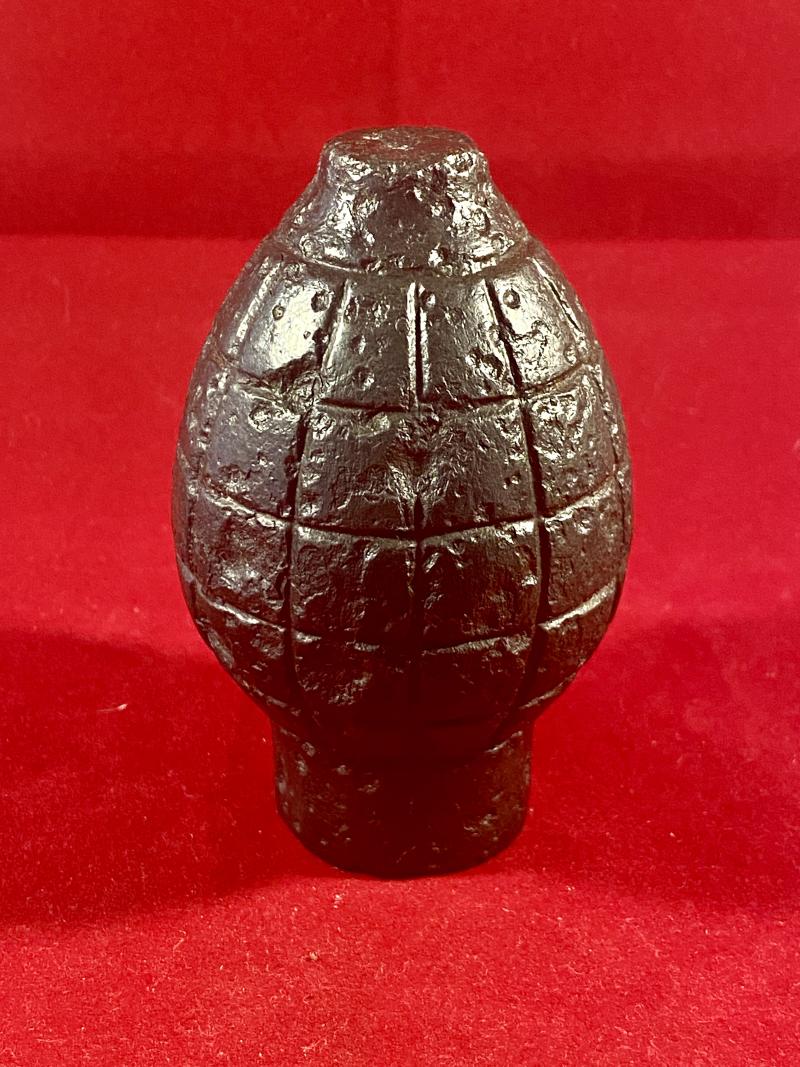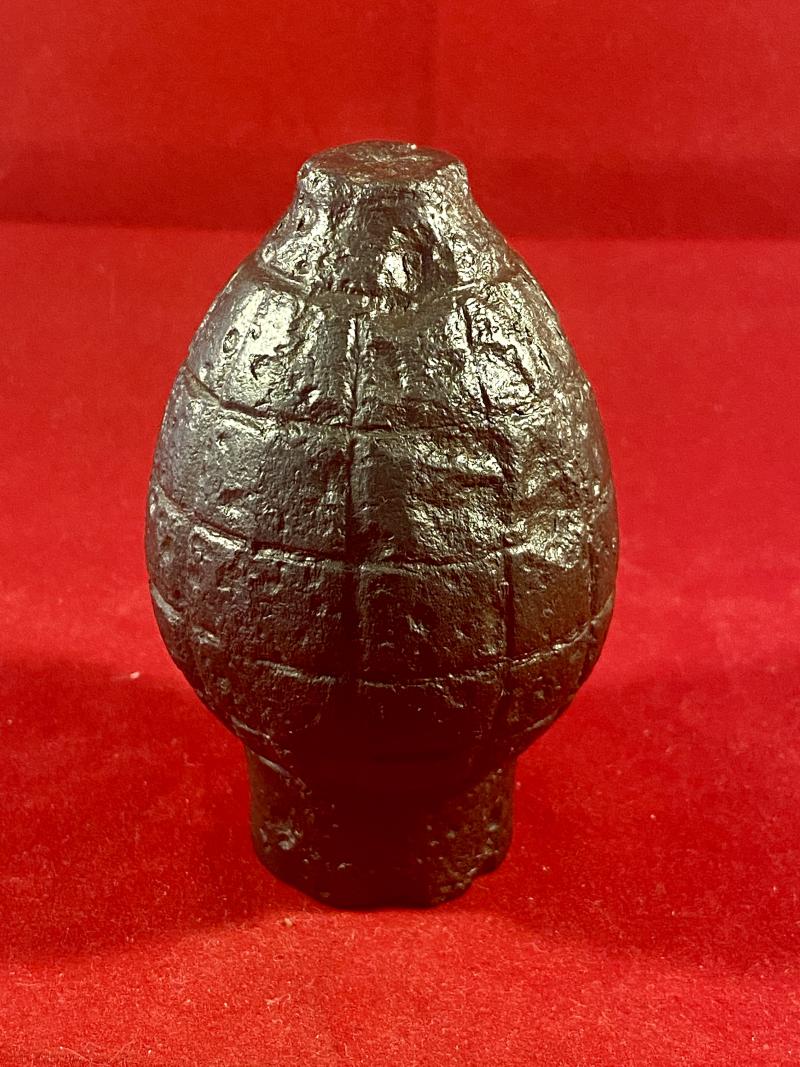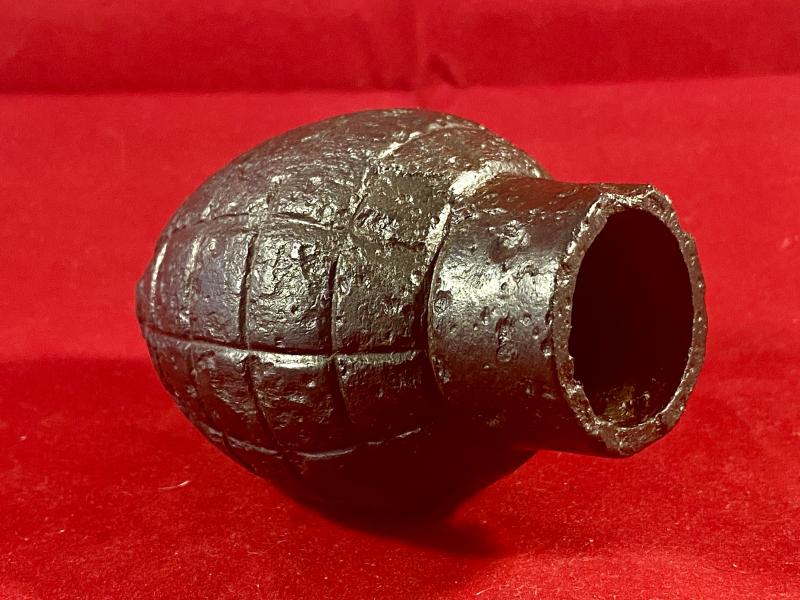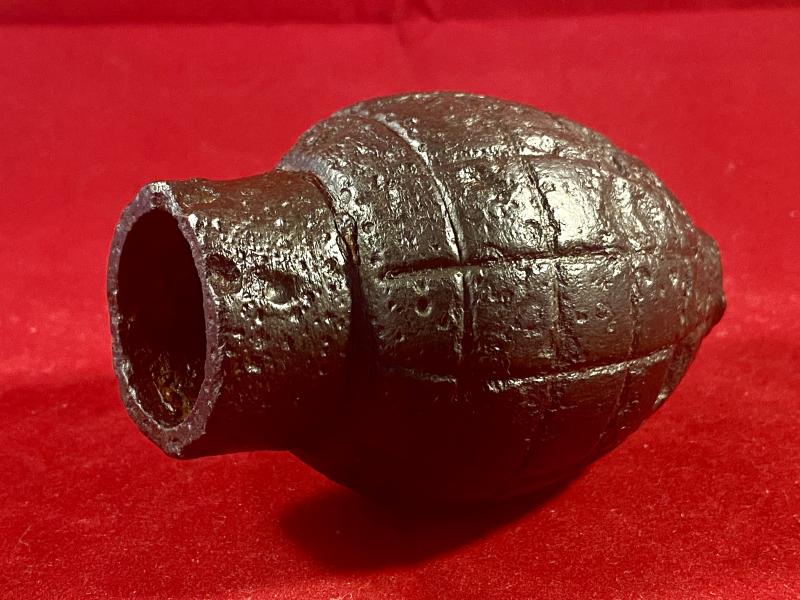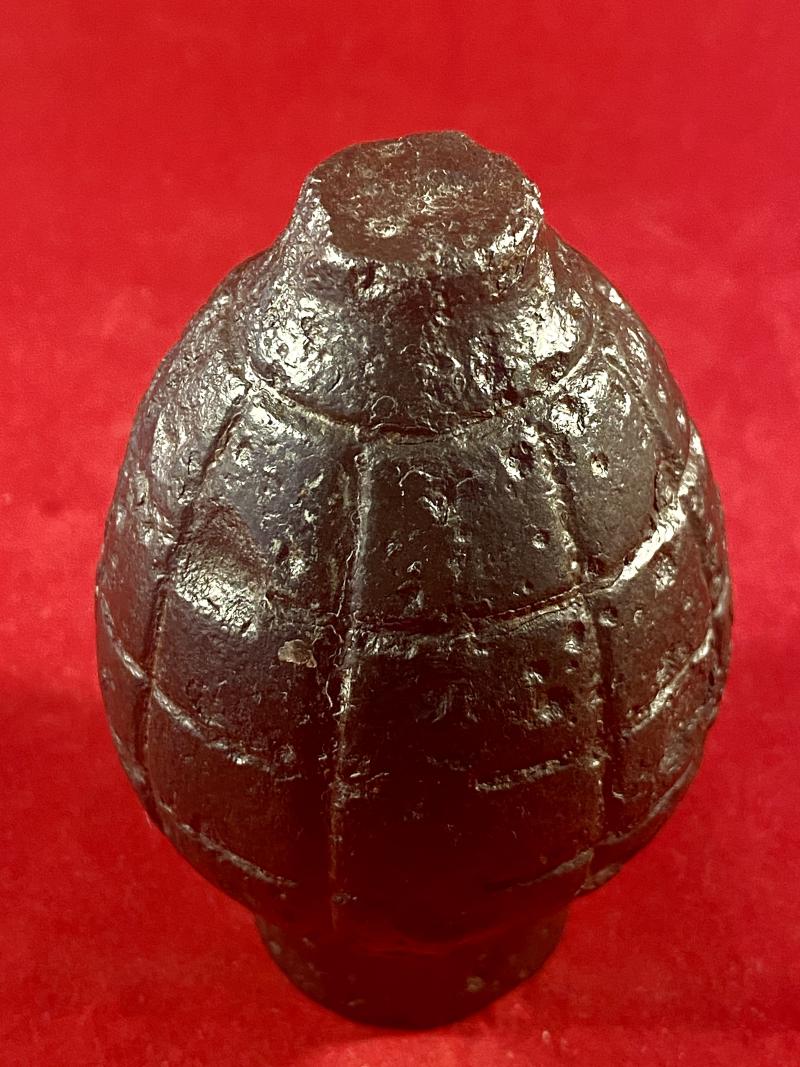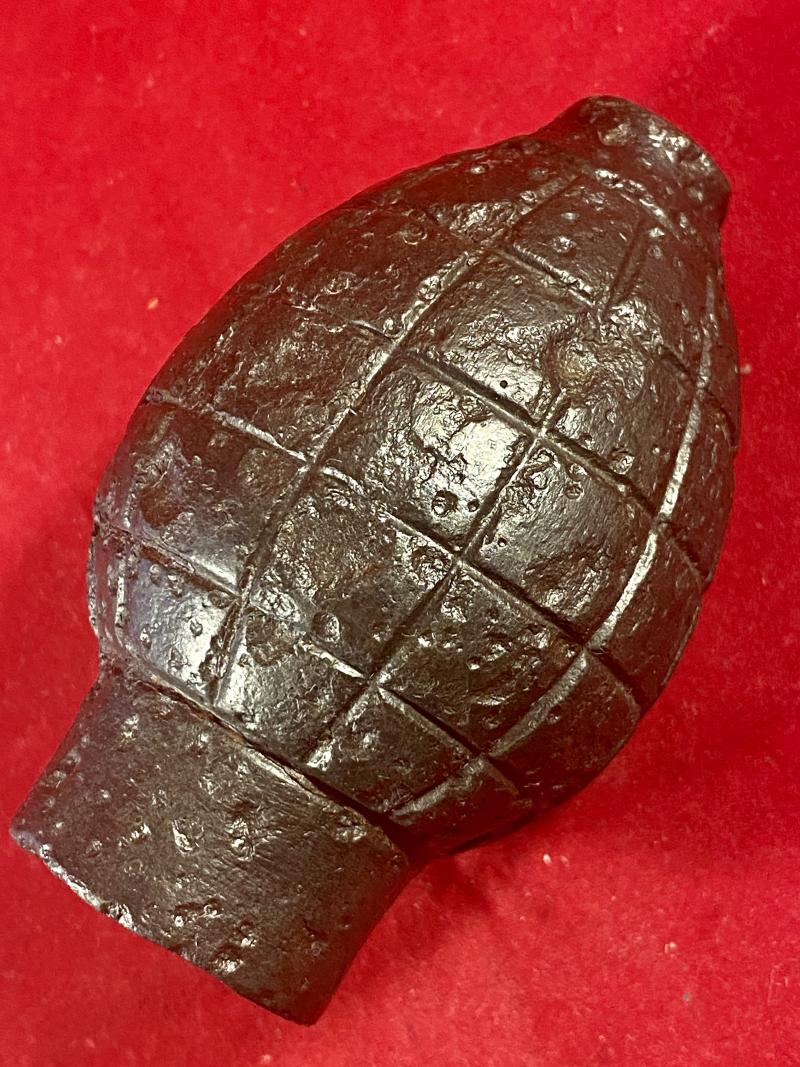Original French WW1 Foug M1916 Inert Lemon Grenade Body - Citron Modèle 1916
Here on offer is an original French WW1 Foug M1916 inert Lemon grenade body.
It no longer has the galvanized steel fuse cover or wood-mounted inert impact fuse. They were easily lost, so it is usual to find just the bodies, such as with this example.
There is a lot of rust pitting on the body, but the fragmentation shape is really evident and it displays very well, ideal for a military collector’s desk.
I have used some Renaissance Wax, (as used by museums), on the metal to protect it from any further oxidisation and now has a lovely dark patina to the metal finish.
These were made in large numbers, but very few have survived until today. Most that were not used in combat were destroyed, so finding them in any condition is quite rare.
By mid 1915, the military manufacture of Foug, in Meurthe et Moselle near Toul, France, began to produce simple grenades models, including a copy of the famous German stick grenade, and two 'asparagus' grenades (a long then a shorter) in pre-fragmented steel, equipped with a rudimentary wooden igniting percussion plug.
The grenade Citron Foug modèle 1916, “Lemon grenade” is an evolution of the 'asparagus' grenade, mainly designed to reduce the weight and improve the fragmentation properties.
The igniting system was rudimentary, made of a percussion block moving inside a wooden plug equipped with a starter, and linked to a detonator. With no other safety device than a simple spring, it was quite dangerous despite the addition of a removable safety cap in thin iron plate (with flat, then conical, then hemispheric top) covering the ignition plug during transportation.
Its 'citron' ('Lemon') nickname was obviously given by its very recognisable profile. Its rudimentary design and low manufacturing cost, allowed this grenade to be made by a lot of manufacturers and available in large quantities, from 1916 until the end of WW1.
The are no maker’s marks that I can see on the outside.
PLEASE NOTE: This item is free from explosives (FFE and contains no explosive elements or parts thereof).
It measures 3.5” (9cm) high and 2.3” (5.8cm) diameter.
It weighs a heavy 395g.
Please see my pictures for the details of the condition, which complement this description.
Please see my TERMS OF BUSINESS regarding Deliver Charges and Insurance regarding additional insurance cover, should you require it, BEFORE the item is dispatched.
The responsibility lies with the customer to check with your Customs restrictions that this item can be imported into your country.
Code: 51479
40.00 GBP

